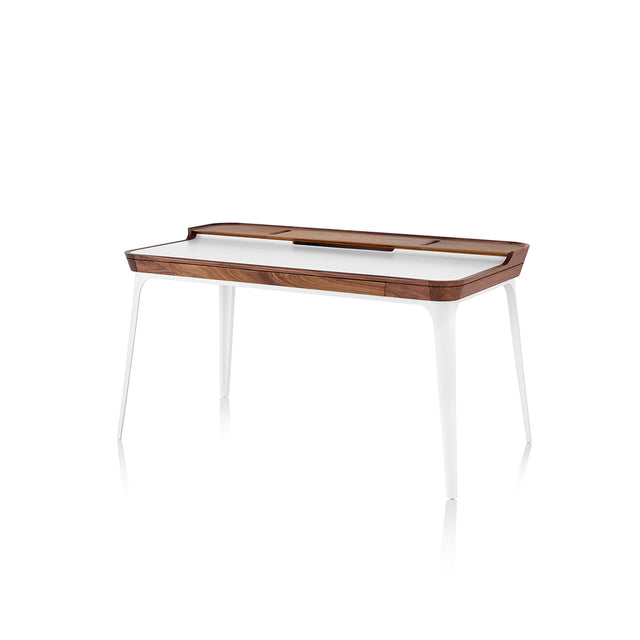
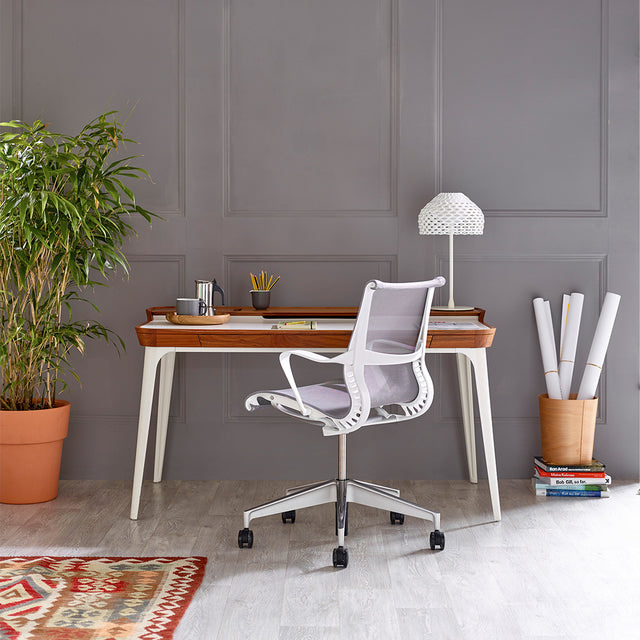
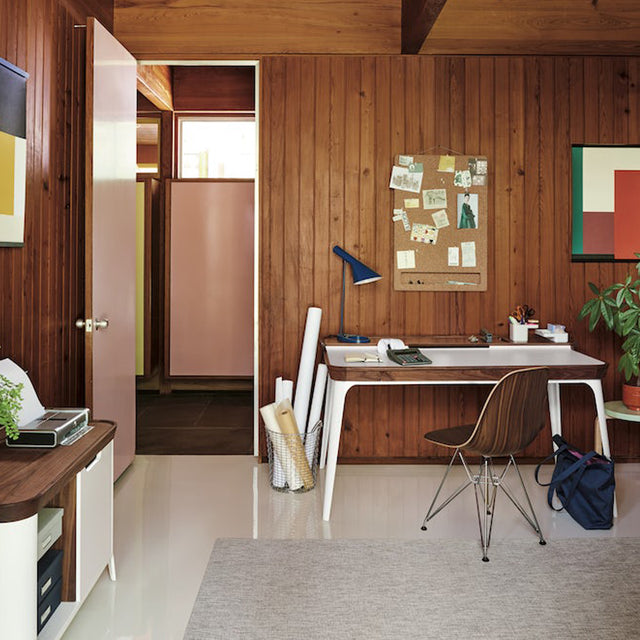
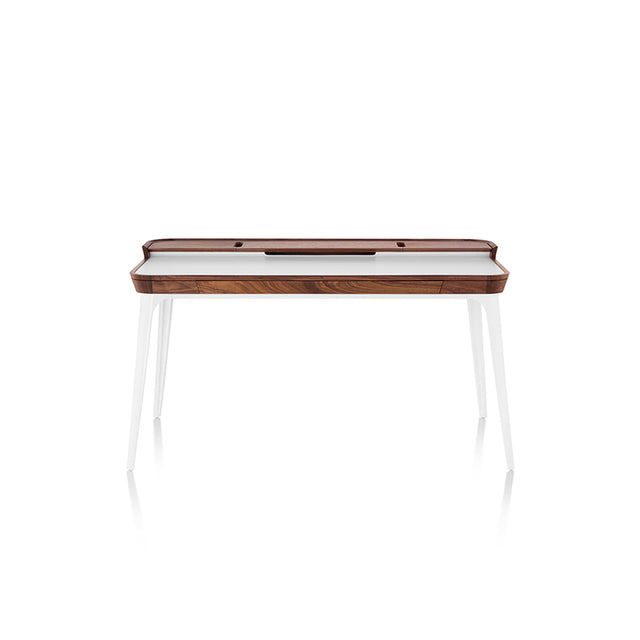
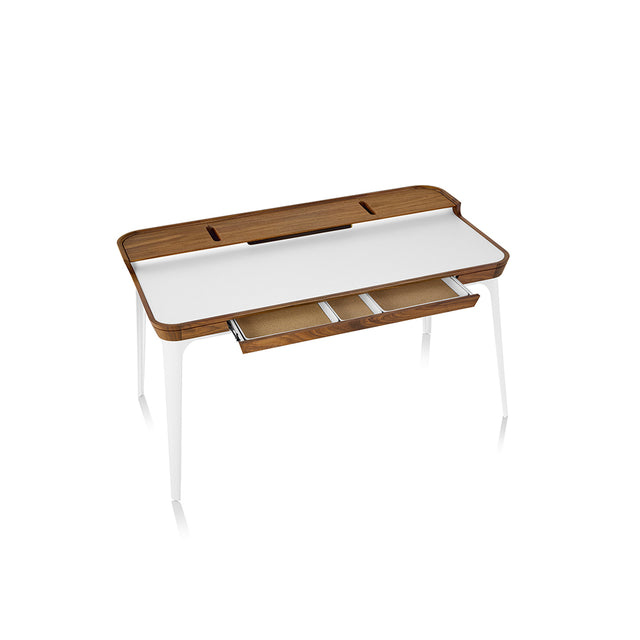
Herman Miller Airia Desk
The Airia Desk (2008) uses clever storage and visual cues to keep clutter out of your work area. The desktop’s slightly elevated back doubles as a shelf for a task lamp and accessories, while its center drawer - with its removable, cork-lined organizer tray - holds papers and mementos. A white laminate inset on the desk’s surface delineates work space and concentrates the user’s gaze. Integrated cord management means no unsightly tangle of cables, as they’re tucked in the body of the desk. This desk is made with 54% recycled content and was honored with a 2008 Good Design™ Award.
Details
- Keeps clutter out of the work area; laminate insert focuses user’s attention.
- Slightly elevated back doubles as a shelf.
- Integrated cord management.
- Made with 54% recycled content.
- Walnut frame and aluminum legs.
Storage Depth (in): 9 (23 cm)
Height (in): 30½ (77 cm)
Width (in): 56 (142 cm)
Depth (in): 30 (76 cm)
Under Height (in): 25½ (65 cm)
- Walnut top and frame.
- Inset white laminate writing surface.
- Removable cork-lined organizers in center
- drawer.
- Powder-coated cast aluminum legs.
- Leveling glides.
Ayako Takase and Cutter Hutton
Ayako Takase and Cutter Hutton, who co-founded Observatory design studio in 2001,
grew up with differing backgrounds but a shared passion for design They each
found their way to industrial design and then to each other while studying at
the Rhode Island School of Design, where they remain active in teaching roles
in addition to their design work.
- Laminates
- Normal cleaning
- Wash the laminate with a soft cloth and a solution of mild detergent and warm water. Rinse thoroughly and dry with a clean soft cloth. For minor repair of burns or other stubborn marks, apply a nonabrasive liquid kitchen cleanser with a soft cloth soaked in warm water. Rub in the direction of the grain; use caution to avoid damaging the surface texture or gloss. If no grain direction is visible, rub with a light, circular motion.
- Do not use powdered abrasives or other harsh cleansers like hypochlorite bleach, hydrogen peroxide, nitric or hydrochloric acids, or lye; they may deface the surface and change the finish color.
- Wood & Veneer
- Normal cleaning
- Dust furniture daily with a slightly damp soft lint-free cloth. Wipe dry with a dry soft cloth in the direction of the wood grain.
Once a month
Clean the surface with a soft cloth dampened with a quality cleaner formulated for wood furniture. Wipe the surface in the direction of the wood grain to remove dirt and fingerprints. Wipe dry with a clean dry cloth. - Twice a year
Apply a good quality furniture polish with a clean soft cloth.Do not use aerosol-powered cleaners or polishes.Also, do not use polishes containing waxes or abrasives, or polishes that are oil based. - Minor repair of water rings, stains, and scratches
Rub the surface lightly in the direction of the wood grain using No. 000 steel wool. Apply a scratch-removing polish with a color and value that simulates the veneer. If the scratches are deep, consult a professional furniture refinisher. - Coated Metal
- Normal cleaning
- Wash coated metal surfaces with a soft cloth soaked in detergent and warm water; rinse thoroughly and dry. Remove scuff marks from low-gloss coatings with pre-softened paste wax, following the instructions on the label. Remove scuff marks and scratches from high-gloss coatings using automotive polishing compounds, either liquid or paste. After polishing, apply a pre-softened automotive paste wax to restore original sheen.
- Do not use abrasive, acid, alcohol–based, or solvent–based cleaners; they may damage the paint finish.
